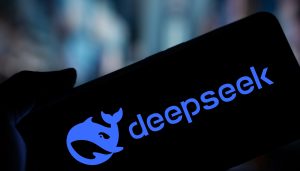Chinese artificial intelligence (AI) startup sensation DeepSeek made headlines after releasing its latest chatbot, DeepSeek-R1, on January 20. The model, which performs at a level similar to OpenAI’s advanced model OpenAI o1, generated widespread excitement because it was able to achieve industry-leading performance at a fraction of the cost of the industry-leading Western AI giants like OpenAI and Microsoft.
DeepSeek’s v3 model, the foundation for R1, reportedly cost only $5.6 million to train. That’s approximately 95 percent less than OpenAI and other competitors. These costs ultimately translate into costs borne by the consumer. While OpenAI charges $200 monthly for unlimited access to its o1 models, DeepSeek provides R1 for free with unlimited use. Beyond costs, DeepSeek delivered in a way OpenAI said ChatGPT would, providing the R1 as open-source, meaning the public can access the underlying code for R1 to use or modify.
IT stocks like Nvidia and Microsoft took a tumble in the wake of DeepSeek’s model release, wiping hundreds of billions of dollars off the U.S. stock market. The release came less than two weeks after the announcement of Stargate, a whopping $500 billion project to preserve the United States’ dominance in artificial intelligence.
The DeepSeek disruption holds unique implications for Southeast Asia. In particular, countries in the region have made big bets on data centers, facilities critical in providing the immense computing power needed to train and run large AI models. Malaysia, for instance, seeks to become a data center powerhouse. Favorable government policies have brought a surge in data center-related foreign investment, amounting to around $32.2 billion in 2024. The city of Johor Bahru was named the fastest growing market in Southeast Asia in DC Byte’s 2024 Global Data Center Index.
Southeast Asia has benefited from significant investment from tech giants like Nvidia, Microsoft, and Alphabet along with Chinese tech giants like ByteDance. Yet DeepSeek’s ability to produce leading models with significantly lower computing power and costs could signal that the locus has shifted. The conventional wisdom that it takes billions of dollars to develop AI models is being challenged. If AI systems no longer need such vast amounts of computing power, that may reduce the need for large data centers or reduce the value of such investments in Southeast Asia.
However, there are other factors at play. DeepSeek’s low-cost model could increase demand for GPUs from a growing AI startup scene in Asia, which may see DeepSeek as a role model in building their own foundational models. Being open source, DeepSeek’s efficiency breakthroughs democratize AI access across startups and research institutions, who can now more easily pursue AI development.
On February 4, Digital Minister Gobind Singh Deo said the Malaysian government was confident that DeepSeek would not derail data center investments, noting that “if you are able to provide services at a much lower cost, you are going to be able to scale it a lot faster.”
Countries and private companies across Southeast Asia are eager to capitalize on the breakthrough. Gobind has said the Malaysian government is studying DeepSeek’s impact on Malaysia before it can be adapted for local use. On January 27, former Tech Mahindra CEO C.P. Gurnani’s AI venture, AIonOS, signed a pact with Indonesian telecommunications giant Indosat to harness DeepSeek’s technology for the Indonesian market.
While it is still early, the DeepSeek disruption will have important implications for Southeast Asia given the region’s data center aspirations. Further developments can continue to excite and disrupt the industry. Alibaba recently released an AI model, a new version of its Qwen 2.5 model, it claims to have surpassed DeepSeek-V3.
































